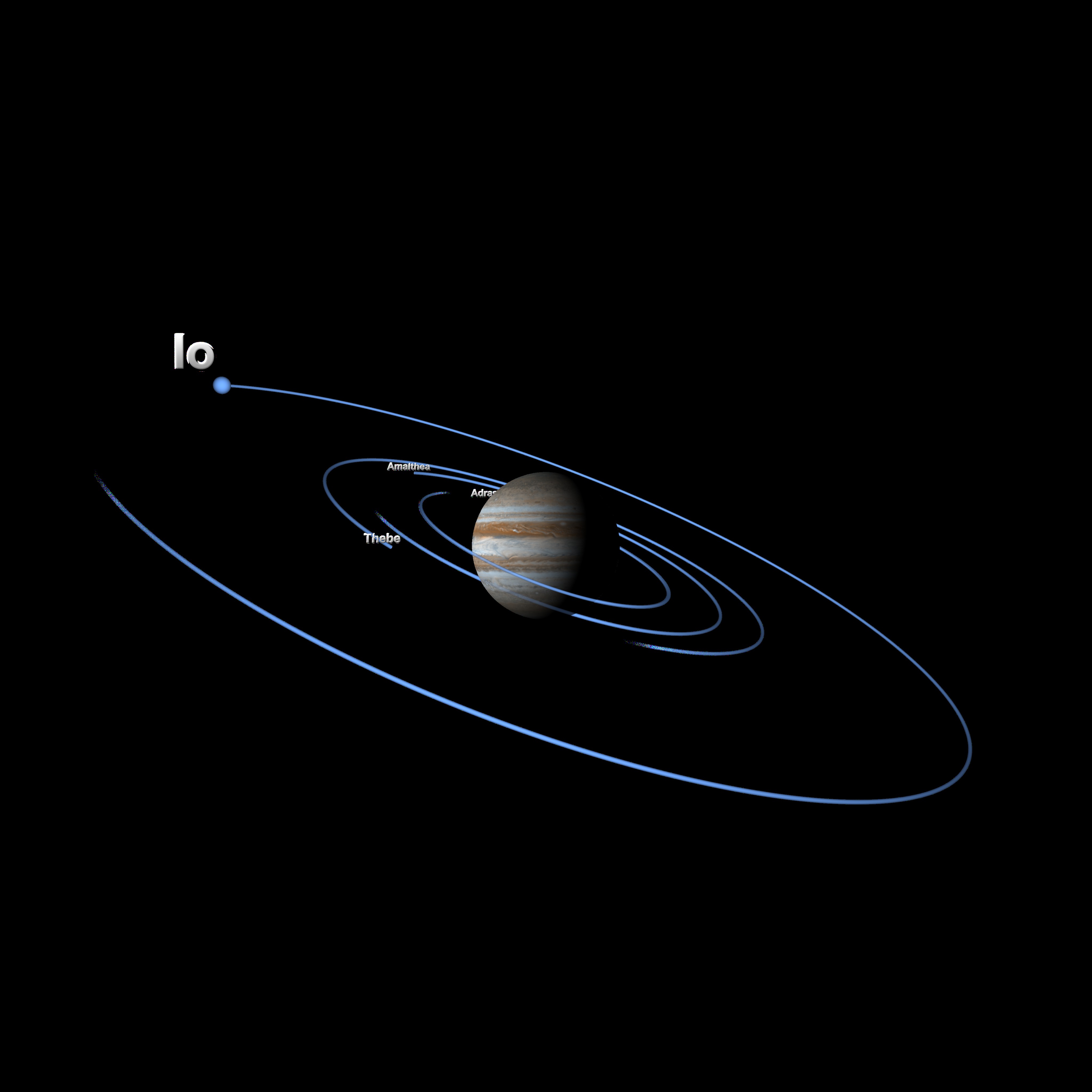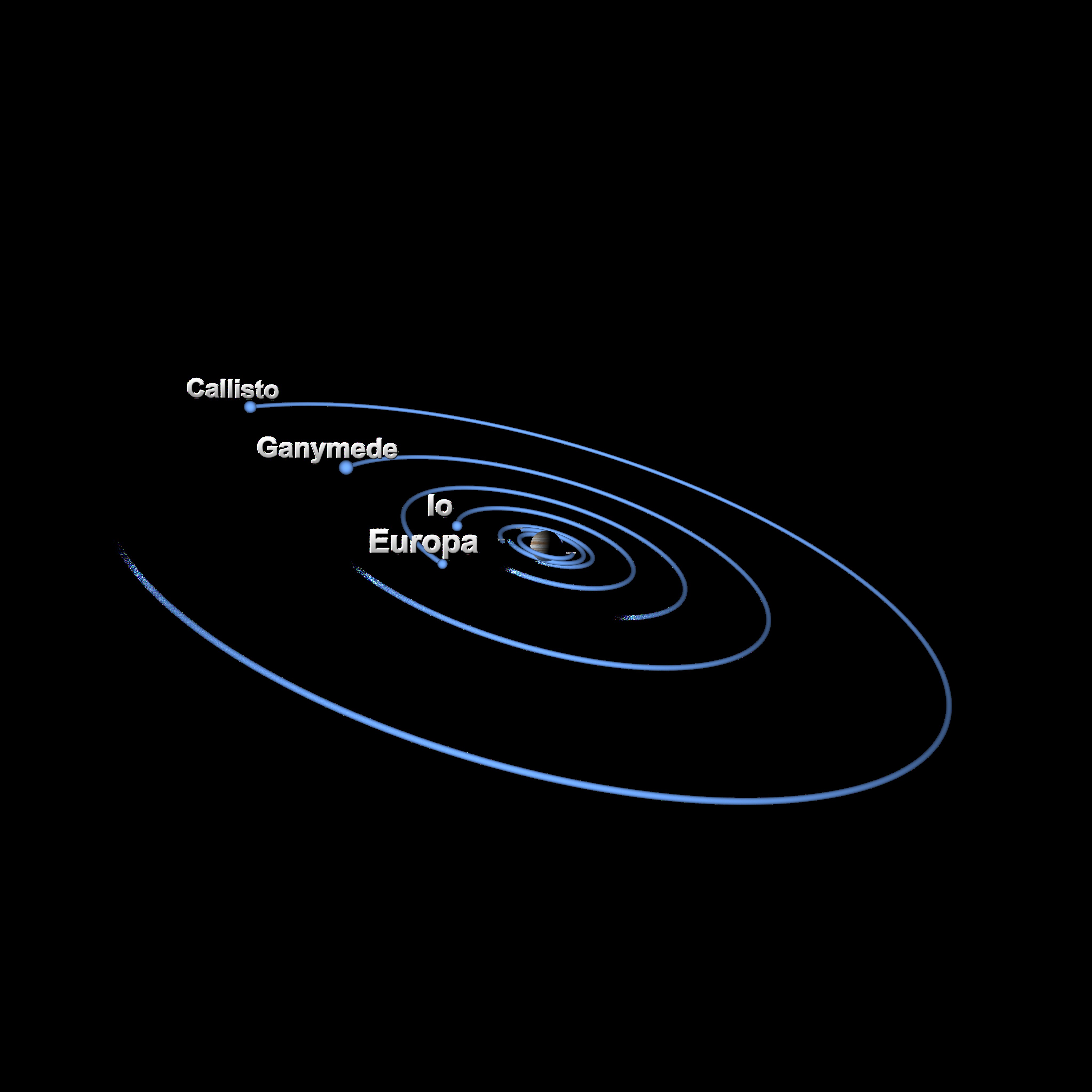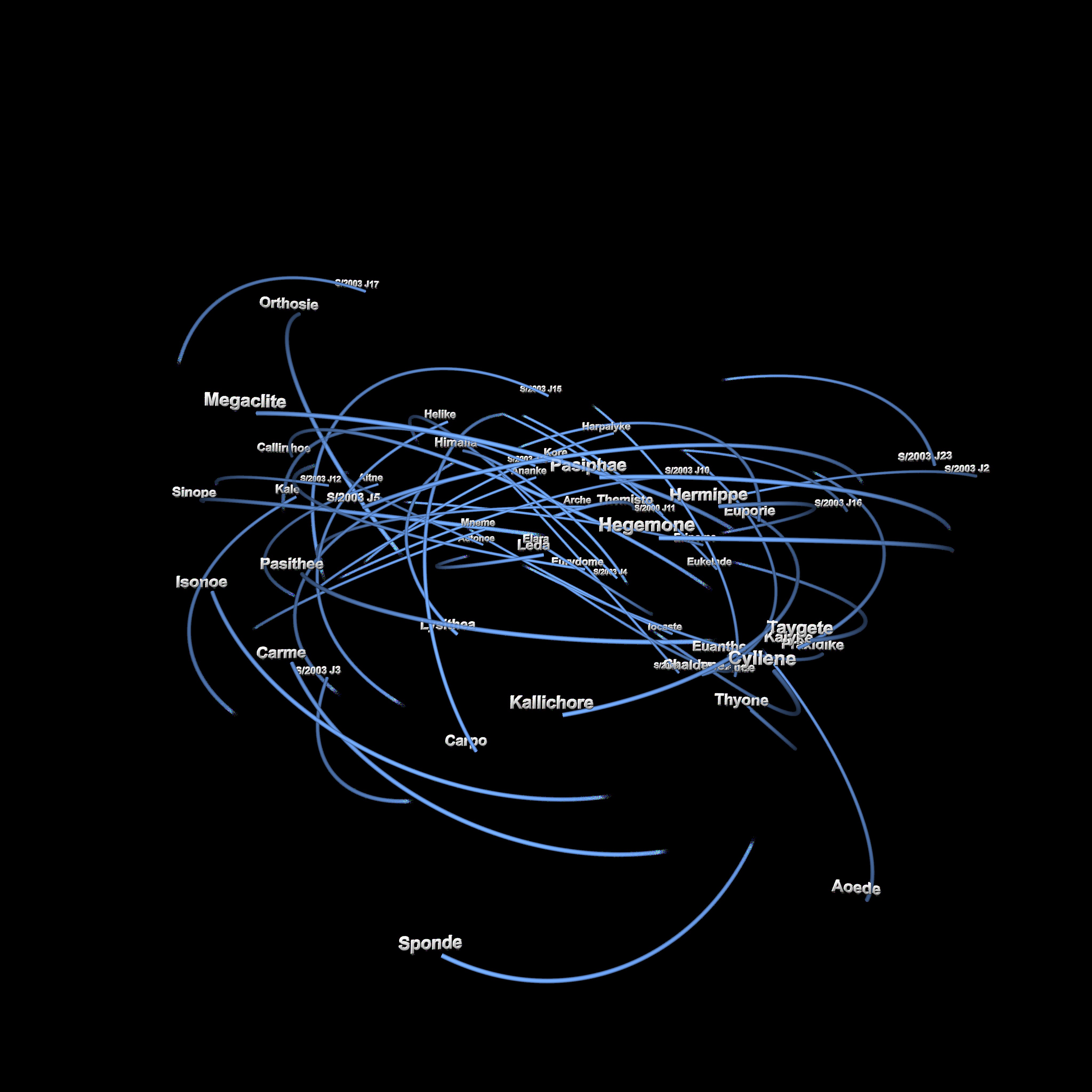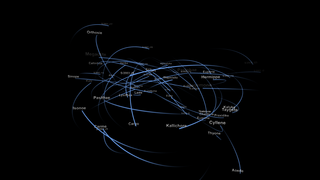Pull out from Jupiter Showing Moon Orbits
This visualization shows jupiter and 63 of its moons. We start close in to Jupiter showing relativly fast moving inner moons that are generally in the same orbital plane including the so called 'Galilean moons': Europa, Io, Ganymede, and Callisto. Other inner moons are: Amalthea, Thebe, Adrastea, and Metis. These inner moons orbit Jupiter as fast as about every 7 hours to about every 17 days. These moons are also relativly close to Jupiter: from around 100 thousand to a couple of million kilometers away.
We pull back revealing many smaller moons much farther away (tens of millions of kilometers) in much longer orbits (up to several years). Time speeds up to show the motion of these moons in irregular orbits. The following outer moons are displayed: Himalia, Elara, Pasiphae, Sinope, Lysithea, Carme, Ananke, Leda, Callirrhoe, Themisto, Megaclite, Taygete, Chaldene, Harpalyke, Kalyke, Iocaste, Erinome, Isonoe, Praxidike, Autonoe, Thyone, Hermippe, Aitne, Eurydome, Euanthe, Euporie, Orthosie, Sponde, Kale, Pasithee, Hegemone, Mneme, Aoede, Thelxinoe, Arche, Kallichore, Helike, Carpo, Eukelade, Cyllene, Kore, S/2000 J11, S/2003 J2, S/2003 J3, S/2003 J4, S/2003 J5, S/2003 J9 ,S/2003 J10, S/2003 J12, S/2003 J15, S/2003 J16, S/2003 J17, S/2003 J18, S/2003 J19, and S/2003 J23.
This visualization was created in support of the Science On a Sphere film called "Largest" which is about Jupiter. The visualziation was choreographed to fit into "Largest" as a layer that is Intended to be composited with other layers including a background starfield. Three copies of this shot are arranged with orbits that fade on as we pull back in order to facilitate a seamless inset (without orbits falling off the boarder) on the Science On a Sphere composited frames.



Related
Visualization Credits
Ernie Wright (UMBC): Animator
Tom Bridgman (Global Science and Technology, Inc.): Animator
Victoria Weeks (HTSI): Video Editor
Michael Starobin (HTSI): Producer
Amy A. Simon (NASA/GSFC): Scientist
NASA/Goddard Space Flight Center Scientific Visualization Studio
https://svs.gsfc.nasa.gov/3604
Data Used:
JPL/Horizon Orbital Ephemerides
Ephemeris - NASA/JPL - 2007/11/23 to 2011/07/02Cassini/Imaging Science Subsystem also referred to as: Cassini/Jupiter imagery
Mosaic - Cassini Imagery/Central Laboratory for OPerations - 2000This item is part of these series:
Science On a Sphere
SOS Production - LARGEST
Keywords:
SVS >> Jupiter
SVS >> Moon
SVS >> Science On a Sphere
SVS >> Planets
SVS >> For Educators
SVS >> Solar System >> Planets >> Jupiter >> Moons
SVS >> Galilean moons >> Europa
SVS >> Solar System >> Planets >> Mars >> Seasons
SVS >> Galilean moons >> Ganymede
SVS >> Galilean moons >> Io
SVS >> Galilean moons >> Callisto
SVS >> Solar System >> Planets >> Moons
SVS >> Solar System >> Planets >> Jupiter >> Atmosphere
NASA Science >> Planets and Moons












